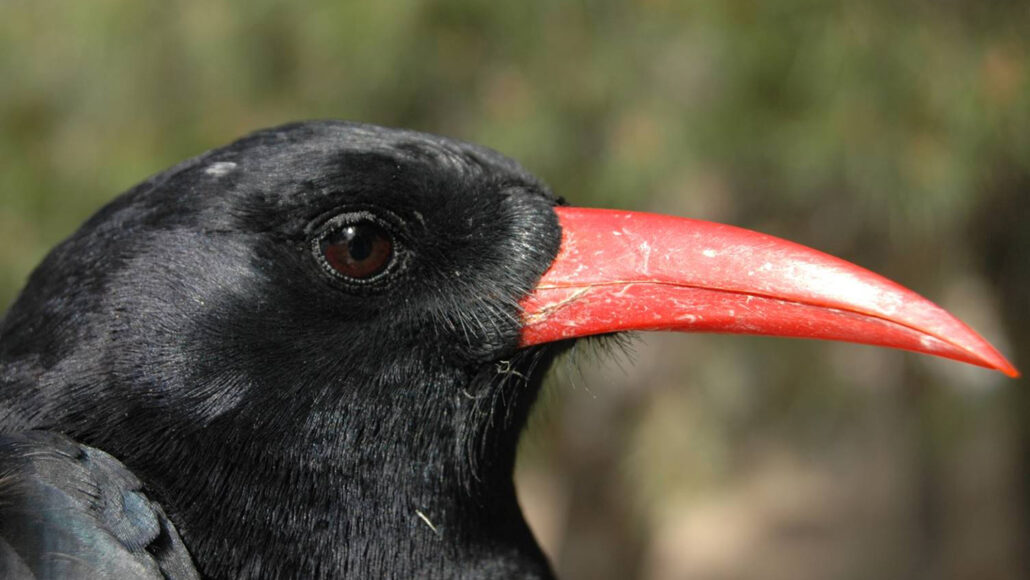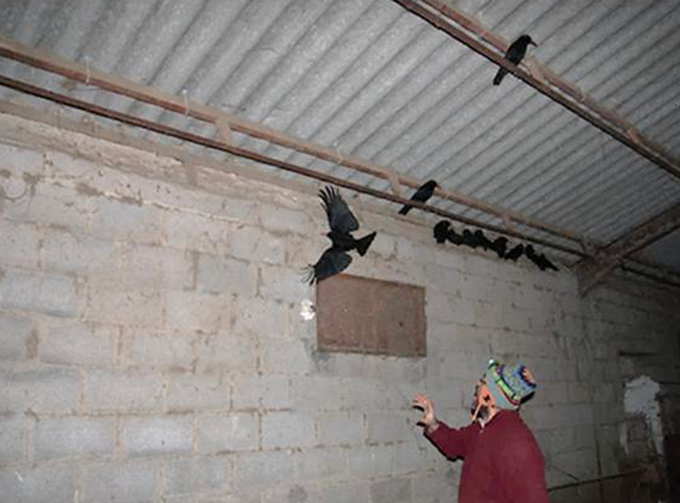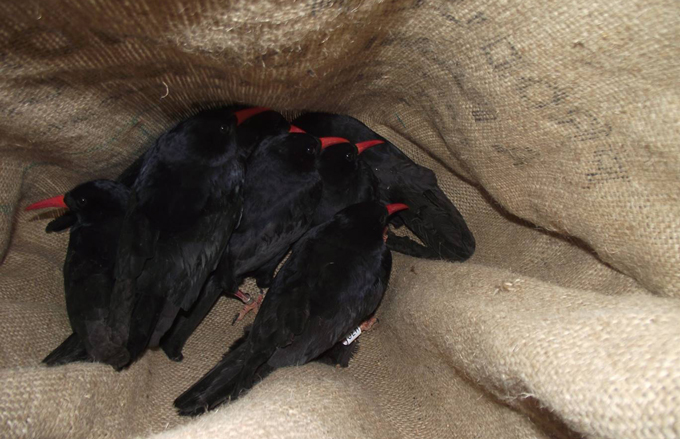Researchers role-played as Neandertals to learn how they hunted birds
The results suggest these ancient hominids were smarter than they are often given credit for

A red-billed chough is hard to catch during the day. But its nighttime roosting habits could have made it easy prey for Neandertals.
Guillermo Blanco
Juan Negro crouched in the shadows just outside a cave, wearing his headlamp. For a brief moment, he wasn’t a scientist. He was a Neandertal, intent on catching dinner. As Negro waited in the cold, dark night, crowlike birds called choughs entered the cave. Negro the “Neandertal” then snuck in and began to hunt.
He was role-playing to study Neandertals’ hunting tactics. Neandertals were an ancient species closely related to modern humans. These hominids lived in Europe and Asia thousands of years ago. Scientists have found piles of chough bones in some caves visited by Neandertals. The bones have marks left by ancient tools and teeth. That suggested these ancient tolk chowed down on the birds.

Negro and his colleagues wondered: How might Neandertals have caught this prey?
Those ancient hunters probably went after choughs at night, the researchers thought. These birds are tricky to catch while they’re flying during the day. But at night, their behavior turns them into sitting ducks. The birds roost in groups and often return to the same spot — even if they’ve been hunted there before.
To test this idea, Negro and his colleagues pretended to be Neandertals. The researchers armed themselves with butterfly nets and lamps. These tools were stand-ins for the nets and fire that Neandertals may have used. In teams of two to 10, the researchers snuck into caves and other spots across Spain where choughs roost. Then, the scientists worked to catch as many birds as they could.
Using flashes of light from flashlights to mimic fire, the “Neandertals” dazzled and confused the choughs. The birds often fled into dead-end areas of the caves. There, they could be easily caught with bare hands. Hunting trips to 70 sites snared more than 5,500 birds in all. Later, the birds were released unharmed. The researchers described their exploits in the September Frontiers in Ecology and Evolution.

Educators and Parents, Sign Up for The Cheat Sheet
Weekly updates to help you use Science News Explores in the learning environment
Thank you for signing up!
There was a problem signing you up.
Negro says this was “the most exciting piece of research” he’s ever done. Negro is an ornithologist, so he knows birds. He works at Spain’s National Research Council’s Doñana Biological Station. That’s in Seville.
Choughs can be caught without fancy tools, this experiment showed. Hunting them just requires teamwork and the cover of night. Neandertals could have used this strategy to capture choughs, the researchers say. But whether Neandertals actually caught birds this way remains unknown.
If this is how Neandertals hunted, these ancient hominids were cleverer than they are often given credit for.

Regularly catching choughs would require several types of smarts, says Ruth Blasco. She’s an expert in Neandertal diet at the Catalan Institute of Human Paleoecology and Social Evolution. That’s in Tarragona, Spain. Neandertals would have had to be able to anticipate their future dietary needs. Then they’d need to devise a hunting strategy. And that would require a deep knowledge of chough behavior, Blasco says.
Role-playing for research isn’t as strange as it sounds, Blasco notes. It is “commonly used … to infer processes that happened in the past.” Other scientists have pretended to be Neandertals using replicas of wooden spears. Those experiments showed that Neandertals could have hurled the weapons to hunt prey at a distance.
Negro’s team used butterfly nets to catch birds fleeing through cave openings. But “the easiest thing was to grab the birds by hand,” Negro says.
“You have to be intelligent to capture these animals, to process them, to roast and eat them,” he notes. Past studies have shown that Neandertals may also have been good at catching seafood. Most people “tend to think that [Neandertals] were brutes with no intelligence,” Negro says. “In fact,” he says, “evidence is accumulating that they were very close to [human].”







